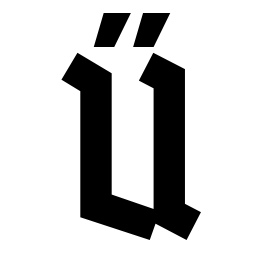Inheritance¶
Ü supports inheritance for classes. Inheritance allows to create classes that borrow contents and behavior of parent classes. Inheritance allows also to implement dynamic polymorphism.
Only polymorph classes can participate in inheritance.
Polymorh are classes which are defined with usage of keywords polymorph, abstract or interface or which have parents.
class A polymorph // A simple polymorph class. It's possible to inherit from this class.
{}
class B interface // An interface. It's possible to inherit from it, but it has some limitations.
{}
class C abstract // Also a polymorph class, but non-implemented virtual methods are allowed inside it.
{}
class D : C // Also a polymorph class, because it has a parent.
{}
class E : B // A polymorph class with an interface parent.
{}
class F : A, B // A polymorph class with two parents one of which is an interface.
{}
class G final : F // A polymorph class from which it's impossible to inherit.
{}
Inheritance rules¶
A class may have no more than one non-interface parent and any number of interface parents.
Non-interface parent class is assumed to be base class.
It may be accessed with usage of base keyword.
base is a this reference converted to base class type.
There are following polymorph class kinds:
interfaceclass is a polymorph class than can’t have base class, fields, virtual methods with implementation.finalclass is a polymorph class from which it’s not allowed to inherit.abstractclass is a polymorph class that may have non-implemented virtual methods. All virtual methods of polymorph classes that are notinterfaceorabstractshould have an implementation.
Abstract and interface classes limitations¶
Abstract and interface classes are not like other classes, they have some limitations:
It’s not allowed to construct an instance of abstract or interface class. It’s possible only to inherit from a such class and create an instance of a child class.
Interfaces can’t have constructors. There is no necessity for them to have one, because they have no fields that need to be initialized.
Abstract classes may have constructors, but whole
thisis not available inside them. Only fields may be accessed, no methods may be called within an abstract class constructor.Interfaces and abstract classes may have destructors, but whole
thiswithin them is not available.
Reference conversion¶
A reference to a child class may be implicitly converted into a reference to parent class. Implicit conversions are possible:
In reference variable or reference field initialization
In function argument passing
In return
What is inherited¶
A child class inherit from its parent public and protected members, private members are not inherited.
Constructors, destructors, assignment operators, equality compare operators are not inherited.
Other methods are inherited, but this remains that of parent class type, except a virtual method is overridden.
Virtual methods¶
A virtual method is a method that is indirectly called and its implementation may be different. A virtual method defined in a class may be overridden in a child class.
A virtual method is defined with usage of following keywords:
virtual- a method is first defined. In such case no parent of the class should have such method.virtual pure- a method is first defined. It’s not allowed to implement it.virtual override- a method overrides at least one parent method.virtual final- a method overrides at least one parent method. Further override of this method is not allowed.
All virtual methods should have this parameter.
It should be mutable or immutable reference, byval this is not allowed in virtual methods.
class A interface
{
fn virtual pure Foo( this, i32 x );
}
class B polymorph
{
fn virtual Bar( mut this, f32 y );
}
class C : A, B
{
fn virtual override Foo( this, i32 x );
fn virtual final Bar( mut this, f32 y );
}
fn CallFoo( A& a, i32 x )
{
a.Foo(x);
}
fn CallBar( B &mut b, f32 y )
{
b.Bar(y);
}
fn Test()
{
var C mut c;
CallFoo( c, 42 ); // С::Foo method will be called
CallBar( c, 0.25f ); // C::Bar method will be called
var B mut b;
CallBar( b, 3.14f ); // B::Bar method will be called
}
A destructor of a polymorph class is always virtual. It may be defined as virtual explicitly, but there is no reason to do this.
